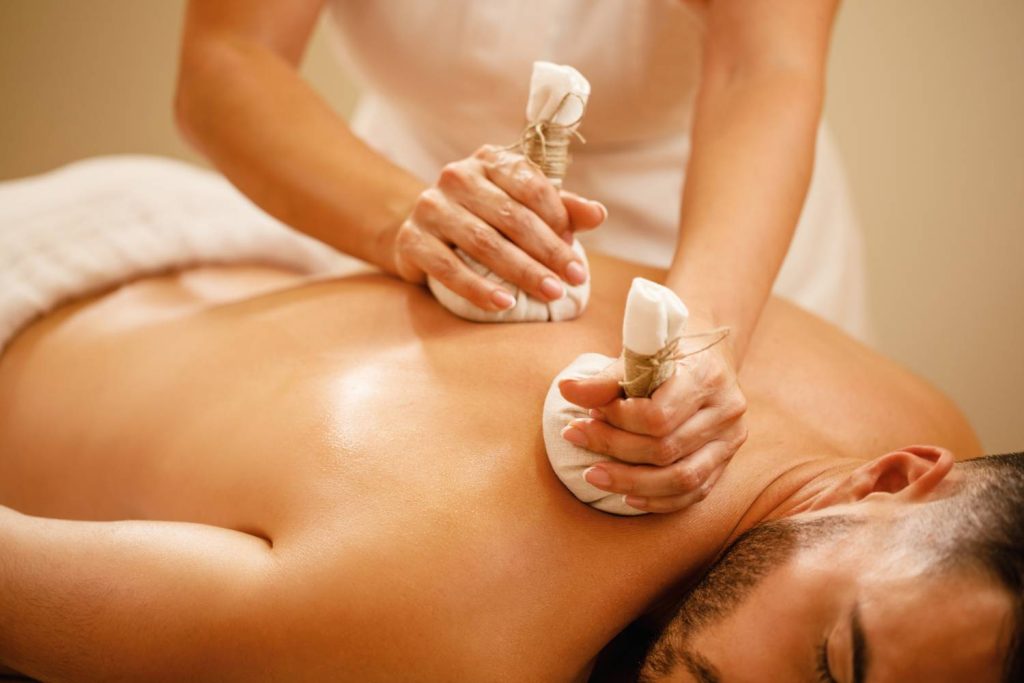Panchakarma is a detoxification and rejuvenation therapy in Ayurveda. It’s not just about cleansing the body, but also restoring balance to the mind and spirit. This five-step process works to eliminate toxins (ama), correct imbalances in doshas (Vata, Pitta, Kapha), and improve overall immunity and vitality. Unlike quick-fix detox trends, Panchakarma is a personalized experience, often lasting several days to weeks, based on an individual’s body constitution and health needs.
Stage 1: Purva Karma
Purva Karma is the preparatory phase that gently guides the body into detox mode. It includes two major practices, Snehana (internal and external oleation) and Swedana (sudation or sweating). These help to loosen toxins and push them toward the gastrointestinal tract for easy elimination during the main therapies. Oils, ghee, and herbal steam treatments are commonly used. This stage is crucial, as a proper warm-up helps ensure that the rest of the treatment proceeds smoothly and effectively.
Stage 2: Vamana
Vamana is a medically supervised emesis therapy used primarily for Kapha-related imbalances such as asthma, allergies, or excessive mucus. Herbal concoctions are used to induce controlled vomiting, helping eliminate deep-seated toxins from the stomach and lungs. Though it sounds intense, when done properly under expert care, it can be deeply cleansing and energizing. It’s not suitable for everyone, and a practitioner will assess your readiness and need for this stage based on your body type and condition.
Stage 3: Virechana
This stage focuses on the Pitta dosha and targets the liver and intestines. Virechana involves the use of natural laxatives to induce controlled bowel movements and flush out accumulated toxins. It is especially helpful for people experiencing skin disorders, acidity, or digestive issues. Patients often feel lighter, clearer, and more balanced afterward.
Stage 4: Basti
Basti is considered one of the most powerful aspects of Panchakarma. It involves administering herbal decoctions or medicated oils through the rectum to deeply cleanse the colon, balance Vata dosha, and nourish tissues. It is beneficial for conditions like arthritis, constipation, neurological disorders etc. Basti not only removes toxins but also helps rejuvenate the digestive and nervous systems. It can be done as Niruha Basti (decoction-based) or Anuvasana Basti (oil-based), depending on what the body needs.
Stage 5: Nasya
Nasya involves administering herbal oils or powders through the nostrils to clear the head and neck region. This is especially useful for sinus problems, migraines, memory issues, and even emotional stress. The nose is considered the gateway to the brain in Ayurveda, so Nasya has a profound effect on mental clarity and sensory function. It’s often paired with facial massage and steam for maximum benefit, making it both therapeutic and soothing.
Post-treatment Care
After detoxification, the body is highly receptive to nourishment and healing. This post-treatment phase includes Rasayana therapy (rejuvenation), dietary adjustments, meditation, and yoga to maintain the benefits. Patients are often guided to slowly reintroduce regular foods and activities. This stage is just as important as the detox itself, helping you lock in the gains and prevent relapse.
Hyderabad has become a hub for Ayurvedic healing due to its combination of modern infrastructure and authentic wellness centers. With an increasing focus on holistic health, many centers in Hyderabad combine old techniques with modern diagnostics to ensure personalized care. For those seeking an effective and trustworthy detox program, looking into panchakarma treatment in Hyderabad can be a step toward better health.
Who Should Consider Panchakarma and When?
While Panchakarma is beneficial for nearly everyone, it is especially recommended for those with chronic fatigue, digestive issues, skin problems, hormonal imbalances, or high stress. Ideally, it should be undertaken during seasonal transitions or when you feel physically or emotionally overwhelmed.







